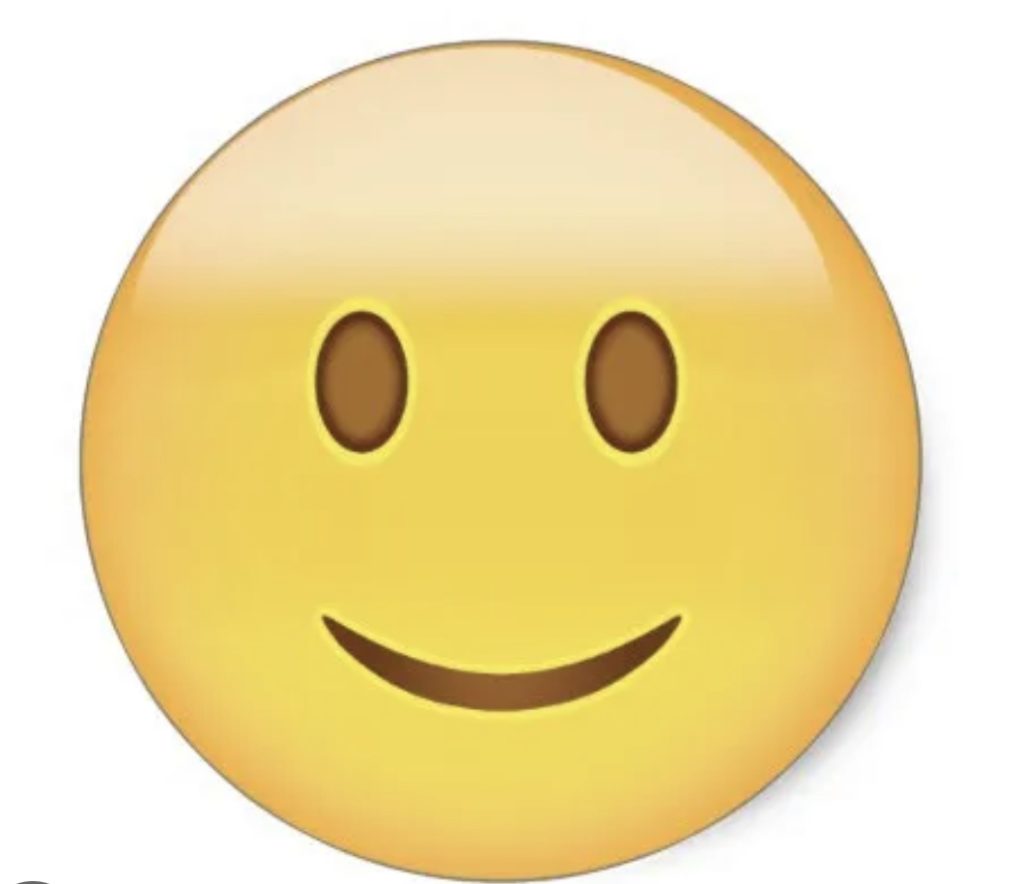With the lack of physical presence that is necessary to truly understand the undertone of online exchanges and communications, these graphics, or rather small images, have become an essential part of what we use to facilitate the nuances of how we convey and bear meaning across media discourse.
Suddenly, writing an email is much less daunting than it used to be. A simple smiley face can convey the sense of light heartedness needed to correct the ambiguity between the digital and the online.
Across various apps, there is an extensive emoji catalogue with an array of facial expressions, food items, and all kinds of caricatures. These graphics can accompany speech but also stand as a ‘developing independent language’Ā (p. 15). Emojis have become signs of our interpretation and understanding. āSomething that stands to somebody for somethingā (Peirce,1987)
Signifiers are to be signified.
With that, perhaps there is a need to explore how emojis create shared meaning potential across communicative modes through the transmission model. Stuart Hall’s transmission model consists of the sender, the message, and the receiver. Whereby the receiver encodes a message with a particular fixed meaning.
Stuart Hall’s ideas of encoding and decoding highlight how there are consistent and dominant ways of mean -making. In this instance, most audiences would agree that a ‘smiley face’ generally means happiness or an attitude closely related to such. This, however, is an exception to the several underlying connotations that a sign can have.
This is clear from how irony and sarcasm have materialised through emojis like these online. Alternatively, the ‘smiley face’ can also be addressed as an act of passive aggression and not for its primary and literal meaning.

Across social media, we have seen that ā’tongue face, wink face, and ellipsis all occurred significantly more frequently with sarcastic than literal commentsā’ (p. 116) This proposes Hall’s idea of how audience members play an active and direct role in interpreting messages and meanings of their own accord concerning their own cultural and social contexts. A thumbs-up could very well imply an agreeable gesture or even a passive-aggressive snide.
Emojis and their semiotic functions point out a clear example of how audiences produce meaning more than they receive it. This is shown by how interchangeable and arbitrary they are. Although there is an intent to encode the message or emoji towards the receiver as comprehensively as possible to deliver its original meaning, we should consider that audiences can deviate from the final message at any time. What Hall consequently describes as āthe arena of consent and resistance”.
References
Logi, L., & Zappavigna, M. (2023). A social semiotic perspective on emoji: How emoji and language interact to make meaning in digital messages. New Media & Society, 25(12), 3222-3246. https://doi.org/10.1177/14614448211032965
DĆ¼rscheid C, Meletis D (2019) Emojis: a grapholinguistic approach. In: Haralambous Y (ed.) Graphemics in the 21st Century. Brest: Fluxus Editions, pp. 167ā183.
Britannica, The Editors of Encyclopaedia. “semiotics”. Encyclopedia Britannica, 17 Nov. 2023, https://www.britannica.com/science/semiotics. Accessed 21 November 2023.
Hall, Stuart. Cultural Studies 1983: A Theoretical History. Edited by Jennifer Daryl Slack and Lawrence Grossberg, Duke University Press, 2016. JSTOR, https://doi.org/10.2307/j.ctv11cw8wg. Accessed 21 Nov. 2023.
Ge J, Herring SC (2018) Communicative functions of emoji sequences on Sina Weibo. First Monday. Available at: https://firstmonday.org/ojs/index.php/fm/article/view/9413 [Accessed 17/11/2023]
āRepresentamenā (pub. 18.08.13-18:27). Quote in M. Bergman & S. Paavola (Eds.), The Commens Dictionary: Peirce’s Terms in His Own Words. New Edition. Retrieved from http://www.commens.org/dictionary/entry/quote-signs-r-4.
https://www.youtube.com/watch?v=6Q4Rfk1fC [Accessed: 17/11/2023]
https://youtu.be/FsaJdS3OgV4?si=5VRluXpulkWTsmx [Accessed: 17/11/2023]


I like your approach to this question as we use emojis daily but don’t seem to question their purpose or why we love them so much. This blog helps to answer the question
A very interesting article,I think emoji has taken over my life now,and I use it almost every day.I completely agree with your point of view.In our country,when I communicate with my peers and encounter awkward or speechless situations,we usually send a smiley face emoji,which is not the meaning of this emoji itself.But I never thought it was related to the theory proposed by Hall.Looking forward to your next articleļ¼
Hi, I really love your blog explains the concept of emojis as a language now. I like how you explained hoe emojis have their own way to have a message encoded in it and it also pulls the language barrier down in universities.